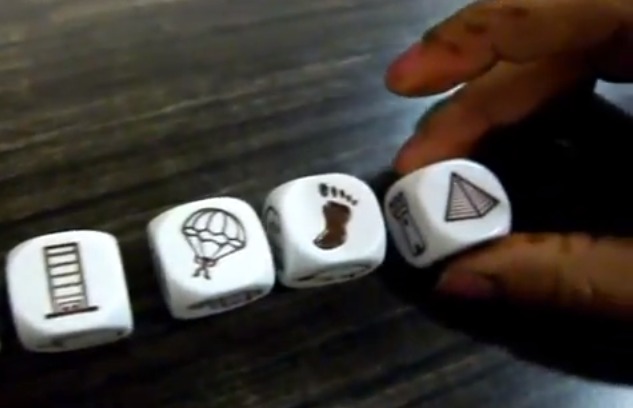Make a story game
Create a choose your own adventure story game using paper, markers, and dice; design characters, branching choices, and multiple endings to play with friends.



Step-by-step guide to make a choose-your-own-adventure story game
PROGRAMMING FOR KIDS | HOW to CREATE YOUR FIRST SCRATCH GAME
Step 1
Choose a fun theme and decide who your main character will be.
Step 2
Create a character sheet by drawing your main character and writing their name at the top.
Step 3
Write one short sentence that explains the starting situation for your story.
Step 4
On a new sheet draw a flowchart with boxes for scenes and arrows for choices.
Step 5
Number each box on the flowchart with a unique scene number.
Step 6
Write a short sentence inside each numbered box that describes what happens in that scene.
Step 7
Under each box add two or three numbered choices that point to other scene numbers.
Step 8
Copy each numbered scene sentence onto its own page or card and write the scene number at the top.
Step 9
Decide how the die will affect chance events and write a simple die rule on any scene that needs randomness.
Step 10
Create three to six ending pages labeled END and write a short paragraph for each ending.
Step 11
Make a one-page rule sheet that explains how to start the game how to roll the die and how to move to a new scene number.
Step 12
Play your game with a friend from the start to an ending while following the rules and rolling the die.
Step 13
Tidy any confusing scenes by rewriting them on their scene pages.
Step 14
Make a cover page with a title and your name and assemble the scene pages into a deck or booklet.
Step 15
Share your finished story game on DIY.org
Final steps
You're almost there! Complete all the steps, bring your creation to life, post it, and conquer the challenge!


Help!?
What can we use if we don't have a physical die?
If you don't have a die for the step 'decide how the die will affect chance events,' use a coin (heads/tails), a phone random-number generator, or a spinner app and write that rule on the relevant scene page just like the die rule.
What should we do if players get stuck because a choice points to a missing scene number?
If a choice points to a missing scene number or creates a dead end, check your numbered flowchart and scene pages, renumber or add the missing box/page to match the arrows, and tidy any confusing scenes by rewriting them as the instructions suggest.
How can we adapt the activity for younger or older children?
For younger kids, simplify by drawing 6–8 picture-heavy boxes on the flowchart with very short sentences on each scene page and only a couple of endings, while older kids can create many numbered scenes, more complex die rules, and longer paragraphs for endings.
How can we enhance or personalize the finished story game?
To enhance the game, add extra character-sheet details and illustrations, craft small props tied to choices, record simple sound effects for scenes, design a decorated cover page, assemble the pages into a booklet, and then share it on DIY.org.
Watch videos on how to make a choose-your-own-adventure story game
How to Create an Epic Story in Scratch (with Examples!)
Facts about storytelling and game design for kids
✂️ Many game designers prototype with paper, markers, and dice because you can test rules and endings the same day you create them.
🔁 Branching adds up fast: 3 choices at 4 decision points gives 3^4 = 81 different story paths you can design!
🎲 Dice have been used in games for over 5,000 years — archaeologists found ancient dice in Mesopotamia and Egypt!
💡 Interactive fiction isn't just digital — paper-based gamebooks and branching stories were a popular form of storytelling in the 20th century.
📚 The Choose Your Own Adventure series (started in 1979) made branching stories popular with young readers and inspired many interactive games.
How do you make a choose-your-own-adventure story game with paper, markers, and dice?
What materials do I need to create a paper-based choose-your-own-adventure game?
What ages is this choose-your-own-adventure activity suitable for?
What are the benefits of making a paper choose-your-own-adventure game?


One subscription, many ways to play and learn.
Only $6.99 after trial. No credit card required



